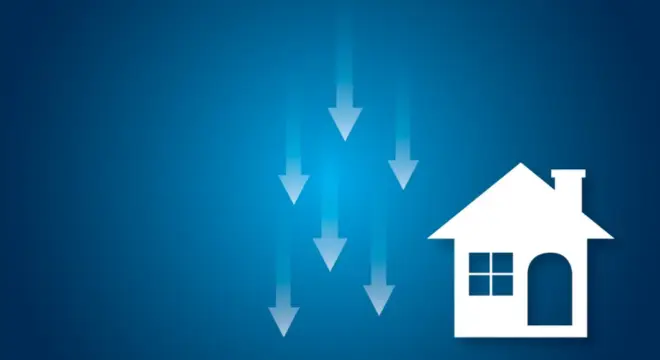U.S. Mortgage Rates Climb to 6.72% — What It Means for Homebuyers
Thinking about buying a home? You might want to check the latest mortgage rates first! After four weeks of decline, U.S. mortgage rates are creeping back up—making home loans a little more expensive.
So, how much have they increased? The 30-year fixed mortgage rate has risen to 6.72%, up from 6.67% last week. It may not sound like much, but even a small hike can add up over time, impacting monthly payments.
But why is this happening? Experts blame rising Treasury yields, inflation worries, and overall economic shifts.
What does this mean for homebuyers? Should you speed up your home search or wait it out? Let’s break it down and see what’s next!
2. Reasons Behind the Increase
1. Treasury Yield Impact:
Mortgage rates often move in sync with 10-year Treasury yields, which have recently risen. When Treasury yields go up, borrowing costs for banks increase, leading to higher mortgage rates for consumers.
2. Economic Factors:
Rising inflation and the Federal Reserve’s monetary policies play a major role in determining mortgage rates. If inflation remains high, the Fed may keep interest rates elevated, pushing mortgage rates even higher.
3. Market Volatility:
Uncertainty in the economy, changes in investor sentiment, and new economic data releases can cause fluctuations in mortgage rates. When investors expect economic instability, they adjust their strategies, which can indirectly impact mortgage rates.
With these factors at play, homebuyers and investors need to stay updated as rates continue to shift.
3. Comparison with Previous Weeks and Last Year
- First Increase After a Month – After four straight weeks of decline, mortgage rates have finally ticked up again, marking a shift in recent trends.
- Higher Rates Last Year – In 2023, mortgage rates surged past 7%, making borrowing even more expensive than it is today.
- Still Lower Than 2023’s Peak – Even though rates have risen this week, they remain below last year’s highest levels, giving homebuyers a bit of breathing room—for now.
As the market continues to adjust, the big question remains: Will rates keep rising, or is this just a temporary bump?
4. Impact on Homebuyers and the Housing Market

1. Higher Mortgage Costs:
As mortgage rates rise, monthly payments become more expensive, making it costlier to finance a home. Even a small rate increase can add hundreds of dollars to annual housing expenses.
2. Reduced Home Affordability:
With higher loan costs, many potential buyers may step back, delaying their home purchases or settling for smaller, less expensive properties. This could particularly impact first-time buyers who rely on financing.
3. Effect on Housing Demand:
Slower home sales and cautious buyers may lead to a cooling housing market. If rates continue to climb, sellers might struggle to attract buyers, leading to longer listing times and possible price adjustments.
With affordability tightening, the big question is: Will buyers push forward or wait for rates to drop?
5. Expert Opinions & Predictions
1. Federal Reserve’s Role:
The Federal Reserve’s decisions on interest rates play a major role in determining mortgage trends. If the Fed keeps rates high to fight inflation, mortgage rates could stay elevated. On the other hand, if inflation cools, the Fed may ease policies, leading to lower rates.
2. Possible Rate Stabilization:
Some experts predict that mortgage rates may stabilize or even decline later this year if inflation slows and the economy remains steady. However, this depends on upcoming Fed meetings and economic data.
3. Uncertainty Remains:
Despite predictions, uncertainty looms. Inflation trends, job market shifts, and global economic conditions will influence where rates go next. Homebuyers and investors will need to stay alert to market changes before making big decisions.
So, what’s next? Will rates settle, or are we in for more surprises?
Frequently Asked Questions (FAQ)
1. Why did mortgage rates increase this week?
Mortgage rates rose due to higher 10-year Treasury yields, inflation concerns, and broader economic factors influencing interest rates.
2. How do higher mortgage rates affect homebuyers?
Higher rates mean increased monthly payments, making homeownership more expensive. This could lead to fewer buyers in the market and slower home sales.
3. Are mortgage rates expected to continue rising?
Experts predict fluctuations, with future rates depending on Federal Reserve policies, inflation trends, and economic performance. Some believe rates may stabilize later this year.
4. How do mortgage rates compare to last year?
In 2023, mortgage rates exceeded 7%, making borrowing even more costly. While rates have risen this week, they remain below last year’s peak—for now.
5. What can homebuyers do in response to rising rates?
- Lock in a mortgage rate before further increases.
- Consider adjustable-rate mortgages (ARMs) for lower initial payments.
- Improve your credit score to secure better loan terms.
6. Conclusion
Mortgage rates have risen for the first time in weeks, highlighting the housing market’s sensitivity to interest rate changes. As economic conditions shift, homebuyers and investors must stay informed to make the right decisions.


